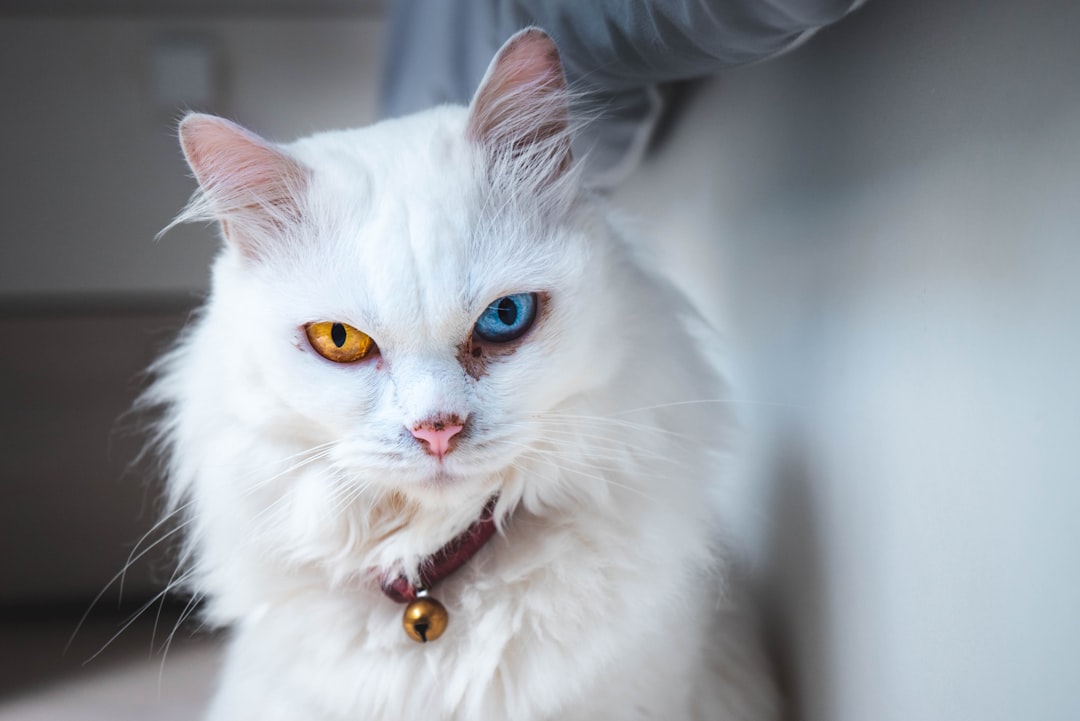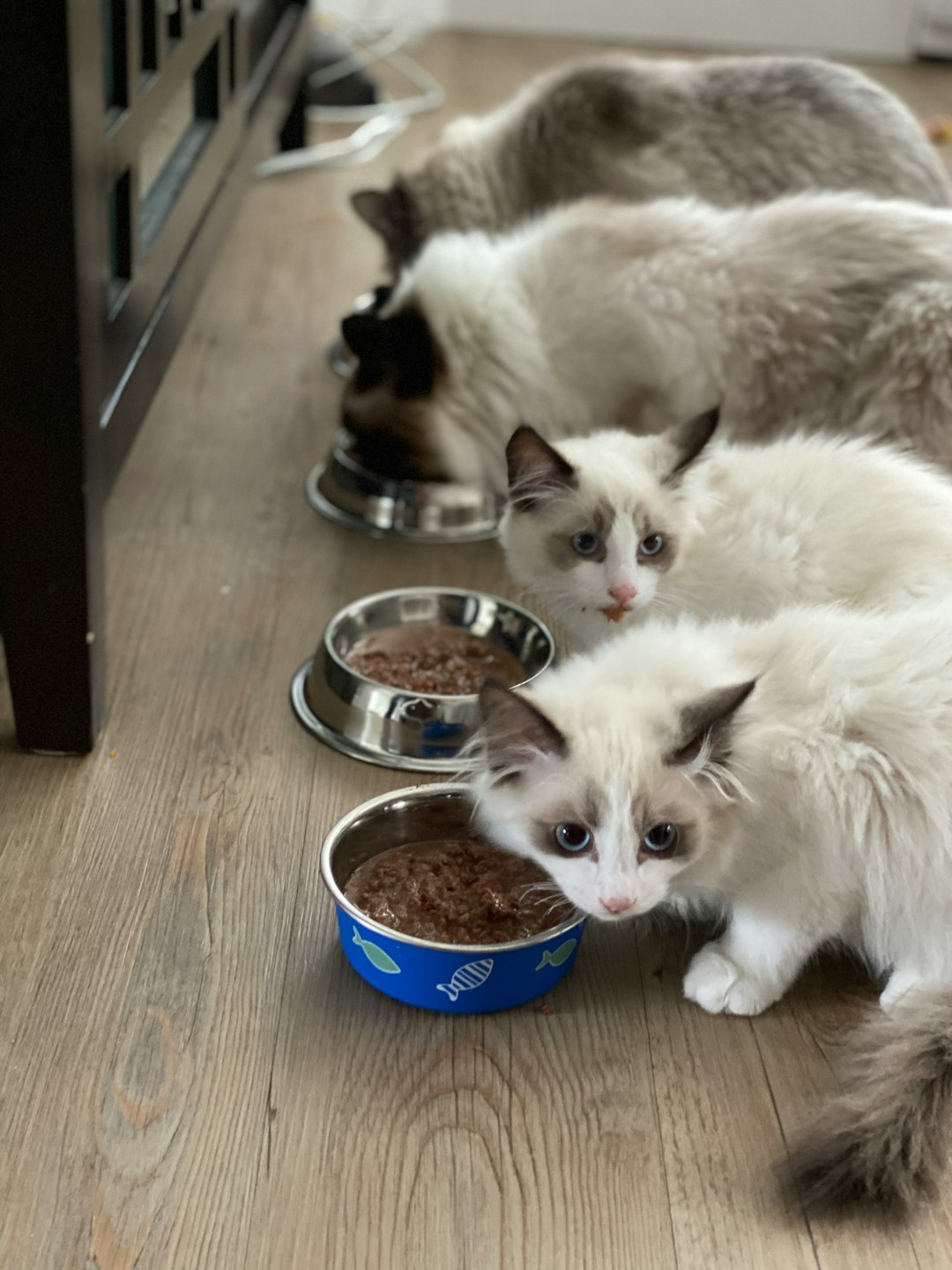As a cat owner, the decision to declaw your feline friend can be daunting, especially considering the heated debates surrounding this procedure. While some pet parents pursue Cat declawing near me as a solution for protecting their furniture and skin, understanding the implications is crucial. In this article, we will explore the ethical dimensions of cat declawing, guide you through researching local services that prioritize safety and compassion, and outline important factors such as cost and aftercare. By equipping yourself with the right information, you can make informed choices that prioritize your cat’s well-being while addressing your concerns at home.
Understanding Cat Declawing: A Controversial Procedure
What Is Cat Declawing?
Cat declawing, or onychectomy, is a surgical procedure that involves the amputation of a cat’s toe bones. Unlike merely trimming nails, this procedure fundamentally alters the cat’s anatomy. During surgery, the veterinarian removes not only the claw but also the bone from which it grows. The goal is to prevent scratching behaviors, often viewed as problematic by cat owners. However, it is essential to recognize that declawing is not merely a cosmetic decision; it has significant implications for a cat’s health and behavior.
The Ethical Debate Surrounding Declawing
Declawing remains a highly controversial topic. Many veterinary organizations, including the American Veterinary Medical Association (AVMA), advise against this practice due to its potential for pain and long-lasting effects on cats. Critics argue that declawed cats may face behavioral issues, such as increased aggression or litter box aversion, stemming from their inability to protect themselves.
The following table illustrates key points in the ethical debate:
| Points of Concern | Pro-Declawing Arguments | Anti-Declawing Arguments |
|---|---|---|
| Animal Welfare | Prevents furniture damage | Causes pain and permanent change in behavior |
| Behavioral Changes | Reduces scratching | Leads to aggression and stress |
| Alternatives Availability | Quick solution for annoyance | Alternatives like nail caps exist |
Engaging in discussions about declawing is vital for responsible pet ownership. As you consider finding cat declawing near me, it is imperative to thoroughly assess the potential consequences and ethical implications of the decision to declaw your cat.
Researching Local Options: Finding Services for Cat Declawing Near Me
Using Online Resources and Reviews
Finding reliable services for cat declawing involves leveraging online resources for informed decision-making. Search for local veterinary clinics and animal hospitals that offer declawing procedures. Websites like Yelp, Google Reviews, and specific pet forums often provide customer experiences that can help you gauge the quality of care offered.
| Resource | Type of Information |
|---|---|
| Yelp | Customer reviews and ratings |
| Google Reviews | Star ratings and feedback |
| Facebook Groups | Community discussions and recommendations |
By reading both positive and negative reviews, you can build a more comprehensive understanding of each facility’s approach and reputation. Furthermore, social media platforms can connect you with local pet owners, allowing you to ask for their recommendations and experiences directly.
Consulting Local Veterinarians
Another effective way to locate suitable cat declawing services is to consult local veterinarians. Schedule an appointment for an initial consultation to discuss your options and gather insights on the procedure. Be sure to ask your veterinarian about their experiences with different facilities.
Here are some essential questions to consider:
- What clinics do you recommend for declawing?
- How experienced are the veterinarians at those clinics?
- What is the recovery process like for declawed cats?
This proactive approach ensures that you receive personalized guidance while aligning your search for cat declawing near me with the best veterinary practices available in your area.
Safety Considerations When Choosing Declawing Services
When contemplating cat declawing near me, it’s vital to prioritize safety for your feline friend. Ensuring that the procedure is conducted with utmost care can significantly affect your cat’s recovery and well-being.
Evaluating Surgical Techniques
The surgical method employed during the declawing process can greatly impact the safety and success of the treatment. Here’s a comparison of some common techniques:
| Technique | Pros | Cons |
|---|---|---|
| Traditional Declawing | Quick procedure, widely used | Higher risk of complications |
| Laser Declawing | Reduced pain and bleeding | May be more expensive, less available |
| Aesthetic Declawing | Enhanced precision, lower recovery time | Requires advanced equipment |
It is essential to choose a veterinarian who employs safe practices and is familiar with the latest techniques, like laser declawing, which can minimize discomfort.
Assessing Post-Operative Care
Post-operative care plays a crucial role in your cat’s recovery. Here are some considerations:
- Pain Management: Ensure that the clinic provides effective pain relief options. Inquire about their post-surgical protocols to handle discomfort.
- Follow-Up Visits: Regular check-ups are necessary to monitor healing. Ask how often follow-ups are scheduled and what signs of complications to watch for at home.
- Post-Operative Instructions: You should receive clear guidelines for care at home. This includes activity restrictions, wound care, and dietary adjustments.
By evaluating both the surgical techniques and the post-operative care offered, you can ensure a safer and more compassionate experience for your cat. Making informed choices when seeking cat declawing near me is essential for their lasting welfare.
Cost of Cat Declawing: What to Expect in Your Area
Typical Price Ranges
When considering cat declawing, understanding the associated costs is essential. Generally, the cost of cat declawing near me can range from $100 to $500. Here’s a breakdown of typical price ranges:
| Declawing Method | Estimated Cost |
|---|---|
| Traditional Declawing | $150 – $400 |
| Laser Declawing | $300 – $500 |
| Pain Management Packages | $50 – $150 |
These prices may vary based on factors such as the veterinarian’s experience and location.
Understanding Pricing Factors
Several factors influence the cost of declawing your cat:
- Location: Urban areas tend to have higher prices due to increased operational costs.
- Veterinary Practice Reputation: Well-established clinics with skilled veterinarians might charge more for their expertise.
- Procedure Type: Laser declawing, while often more expensive, is considered less painful and promotes quicker recovery.
- Additional Services: Costs for pre-surgery bloodwork, pain management, and post-operative care can significantly impact the total expense.
Ultimately, it’s critical to factor in these elements when budgeting for this procedure. Always consult local veterinary practices to obtain a detailed estimate tailored specifically for your area, ensuring you’re making informed decisions about your pet’s care.
Benefits and Drawbacks of Cat Declawing
Benefits for Owners and Cats
Cat declawing is often considered by pet owners seeking to mitigate destructive behaviors associated with scratching. Here are some potential benefits:
| Benefit | Description |
|---|---|
| Furniture Protection | Declawing can help protect furniture, carpets, and other belongings from damage. |
| Reduced Fear of Injury | Owners may feel more secure, especially in homes with small children. |
| Elimination of Scratching | It may provide immediate relief from the worry of scratches on skin and furniture. |
While these benefits may appear tempting, it is crucial to weigh them against the potential drawbacks.
Potential Risks and Consequences
Though cat declawing offers certain advantages, the procedure carries inherent risks and possible long-term consequences. Consider the following:
| Drawback | Description |
|---|---|
| Pain and Recovery | Declawing can be painful; cats often require time to heal completely. |
| Behavioral Changes | Some cats may exhibit increased aggression or anxiety post-surgery. |
| Physical Implications | The procedure can alter a cat’s natural walking and mobility. |
These factors highlight the importance of evaluating both sides of the cat declawing debate. While searching for Cat declawing near me, it is essential to choose a compassionate service that prioritizes your pet’s welfare and minimizes discomfort.
Exploring Alternatives to Declawing
Effective Nail Trimming Techniques
One of the most effective alternatives to cat declawing is regular nail trimming. This simple practice can greatly reduce scratching damage to furniture and other household items. Here are some tips for successful nail trimming:
| Tip | Description |
|---|---|
| Use the Right Tools | Invest in quality cat nail clippers or a nail grinder. |
| Familiarize Your Cat | Allow your cat to sniff and inspect the tools beforehand. |
| Reward After Trimming | Offer treats or praise to create a positive association. |
Regular trimming can minimize sharp edges and provide comfort for your cat, ensuring they remain happy and stress-free without unnecessary surgical interventions.
Non-Surgical Solutions
Aside from regular nail trimming, several non-surgical solutions can help manage your cat’s scratching behavior. These options include:
| Solution | Description |
|---|---|
| Cat Scratchers | Provide designated areas for scratching, like cat trees and scratching posts, to divert attention from furniture. |
| Soft Paws | These are plastic caps that can be applied to your cat’s nails. They blunt the sharp ends and last several weeks. |
| Behavioral Training | Use positive reinforcement techniques to discourage unwanted scratching and encourage scratching in appropriate places. |
By exploring these alternatives to declawing, you can maintain a harmonious relationship with your feline companion, while also protecting your home. Many cat owners may find effective solutions without resorting to procedures like declawing, emphasizing the importance of finding compassionate and thoughtful approaches to cat care. When searching for cat declawing near me, consider discussing these options with your veterinarian.
What to Ask Before Declawing Your Cat
Key Questions for Your Veterinarian
Before proceeding with the declawing process, it is essential to engage your veterinarian in a thorough discussion. Here are some pivotal questions to consider asking:
| Question | Purpose |
|---|---|
| What are the potential risks and complications? | To understand the possible side effects associated with the procedure. |
| What anesthesia will be used? | To ensure the safety and comfort of your cat during the surgery. |
| How will pain management be handled post-surgery? | To prepare for your cat’s recovery and overall well-being. |
| What are the expected outcomes? | To set realistic expectations regarding behavior changes or impacts on mobility. |
| Are there alternatives to declawing? | To explore other options that could help manage scratching behavior without surgery. |
Understanding Owner Responsibilities
As a responsible pet owner, it’s crucial to grasp the responsibilities that come with declawing. Here are some points to consider:
| Responsibility | Description |
|---|---|
| Post-operative care | Be prepared to provide your cat with a comfortable recovery environment and monitor for signs of pain. |
| Managing behavior changes | Understand that declawing may lead to altered behaviors that require adjustments to your living situation. |
| Ongoing support | Commit to continuous support and monitoring to ensure your cat’s happiness and health after surgery. |
By asking the right questions and understanding your responsibilities, you can make an informed decision about cat declawing near me that aligns with the best interests of your feline friend.
Finding Compassionate Services: The Caring Approach to Cat Declawing
Identifying Cat-Friendly Clinics
When looking for cat declawing near me, it’s essential to choose clinics that prioritize a cat’s well-being. Start your search by identifying facilities with a reputation for being cat-friendly. Here are some characteristics that such clinics typically exhibit:
| Feature | Description |
|---|---|
| Experienced Veterinarians | Look for clinics where veterinarians have specialized training in feline care. |
| Positive Reviews | Check online reviews and ask for recommendations from cat owners. |
| Clean and Comfortable | Ensure that the clinic maintains a clean environment, where cats can feel at ease. |
| Compassionate Staff | Staff members should show understanding and gentleness when handling animals. |
The Importance of Gentle Handling
Gentle handling is crucial when performing procedures like declawing, which can be stressful for a cat. A compassionate approach can significantly reduce anxiety and discomfort. Consider the following practices that define a caring approach:
- Calm Environment: Clinics that provide a quiet space can help minimize stress.
- Gentle Techniques: Look for those who use minimal restraint and soothing techniques during exams and procedures.
- Post-Procedure Care: A commitment to follow-up care, including education on recovery, is vital for ensuring your cat’s well-being post-declawing.
Choosing the right clinic can make a significant difference, not just in the experience of the procedure, but also in the long-term health and happiness of your cat.
Pet Aftercare: Supporting Your Cat Post-Declawing
Caring for your cat after the declawing procedure is crucial to ensure a smooth recovery and enhance their well-being. Post-surgery, cats may experience discomfort, so providing a nurturing environment is essential.
Tips for Recovery at Home
To facilitate a successful recovery, consider the following tips:
| Tip | Details |
|---|---|
| Quiet Space | Create a calm area where your cat can rest undisturbed. |
| Litter Type | Use shredded paper or a softer litter alternative to avoid irritation. |
| Avoid Heights | Prevent jumps or climbing, as this can strain healing paws. |
Engaging in gentle play and interaction can help alleviate boredom. However, keep playtime mild until your cat fully recovers.
Managing Pain and Discomfort
Pain management is essential for your cat’s comfort following declawing. Here are strategies to consider:
| Management Method | Description |
|---|---|
| Veterinary Guidance | Administer prescribed pain relief based on your vet’s advice. |
| Monitor Behavior | Watch for signs of excessive pain, like reluctance to walk or vocalization. Report such signs to your vet immediately. |
Ensure your cat has access to fresh water and soft food. Keeping them hydrated can help with recovery, and providing warmth, like a cozy blanket, adds comfort. It’s vital to monitor the surgical site for any unusual swelling or discharge.
By following these aftercare guidelines, you can support your feline companion effectively during their healing journey, ensuring they recover comfortably and regain their happiness. If you’re searching for cat declawing near me, inquire about their aftercare protocols to find the best support for your cat.
Final Thoughts on Cat Declawing Near Me
Weighing Your Options
When considering cat declawing near me, it is essential to take a moment to weigh both the benefits and potential risks. While declawing may seem like a quick fix for problematic scratching, the procedure often leads to both physical and behavioral implications for your feline friend. Here’s a concise breakdown of factors to think about:
| Factors | Considerations |
|---|---|
| Alternatives | Scratching posts, nail trimming, and soft nail caps |
| Health Risks | Pain, longer recovery time, and possible behavioral changes |
| Cost | Varies significantly by location; review local service pricing |
| Emotional Impact | Possible effects on your cat’s well-being and behavior |
Making an Informed Decision
Ultimately, the decision to proceed with declawing should be made thoughtfully, prioritizing the well-being of your cat. Speak to your veterinarian about alternatives, and ask for recommendations for services that adhere to humane practices. Questions to consider might include:
- What are the potential complications from the procedure?
- What aftercare support is available post-surgery?
- Are there non-invasive alternatives recommended?
By empowering yourself with knowledge and seeking compassionate services, you can ensure that the choices you make align with your cat’s best interests. Prioritizing their comfort and happiness will lead to a more positive outcome, making it crucial to deeply evaluate your options in the realm of cat declawing near me.
Frequently Asked Questions
What is cat declawing and why is it considered controversial?
Cat declawing, or onychectomy, is a surgical procedure that involves the amputation of a cat’s toes at the first joint, effectively removing the nail and the bone it grows from. This process is controversial because it is often likened to amputating a human finger at the last joint. Many veterinarians and animal welfare organizations argue that it causes pain, behavioral changes, and can lead to physical issues for the cat, such as difficulty walking and increased aggression. Consequently, many countries have banned or restricted this practice, advocating for alternatives such as nail trimming, scratching posts, and helping to modify a cat’s behavior.
What are some humane alternatives to declawing my cat?
Instead of declawing, there are several humane alternatives available to manage a cat’s scratching behavior. These alternatives include regular nail trimming, using nail caps that cover the sharp tips of the claws, providing an array of scratching posts made of various materials, and using positive reinforcement to teach cats to use these designated areas for scratching. Environmental enrichment, such as providing cat trees and interactive toys, can also help redirect their natural scratching instincts away from furniture and other undesired areas.
How can I find a veterinarian that offers safe declawing procedures?
To find a veterinarian that offers safe declawing procedures, start by researching local veterinary clinics that specialize in feline care. Look for clinics that are accredited by reputable veterinary associations and have veterinarians who are experienced in performing feline surgeries. Reading online reviews and checking for any complaints regarding their practices can also be helpful. Additionally, consider asking for recommendations from fellow pet owners or local animal shelters. It’s important to schedule consultations to discuss the procedure, potential risks, and to assess the clinic’s approach to animal welfare.
What should I expect during the recovery process after my cat is declawed?
After declawing, the recovery process can vary, but generally, cats will need a quiet and comfortable environment for healing. Expect some discomfort or pain, as well as potential behavioral changes; your veterinarian may prescribe pain relief medications. It’s crucial to monitor your cat for any signs of infection or complications. Providing soft bedding, limiting activities, and ensuring they avoid jumping or running during recovery are essential. Follow your vet’s post-operative care instructions closely to facilitate a smooth recovery.
Are there any legal restrictions on declawing cats in my area?
Legal restrictions on cat declawing vary widely by location. In recent years, numerous states and municipalities in the United States and many other countries have enacted bans or restrictions on the practice. To find out specific regulations in your area, check your state or local animal welfare laws, or consult your veterinarian or a local animal shelter. Being informed about these regulations can assist you in making a compassionate and lawful decision regarding your pet’s care.



